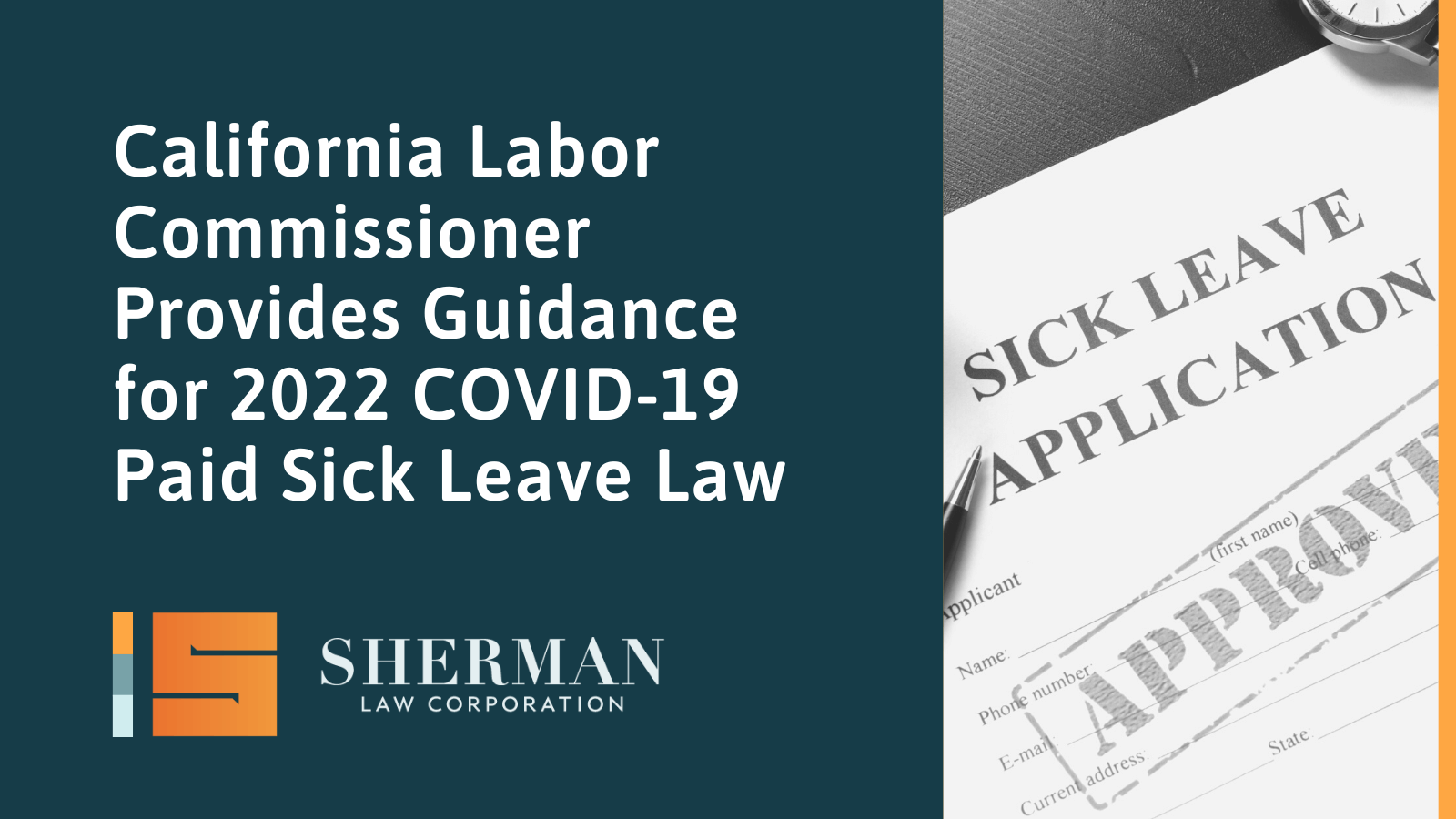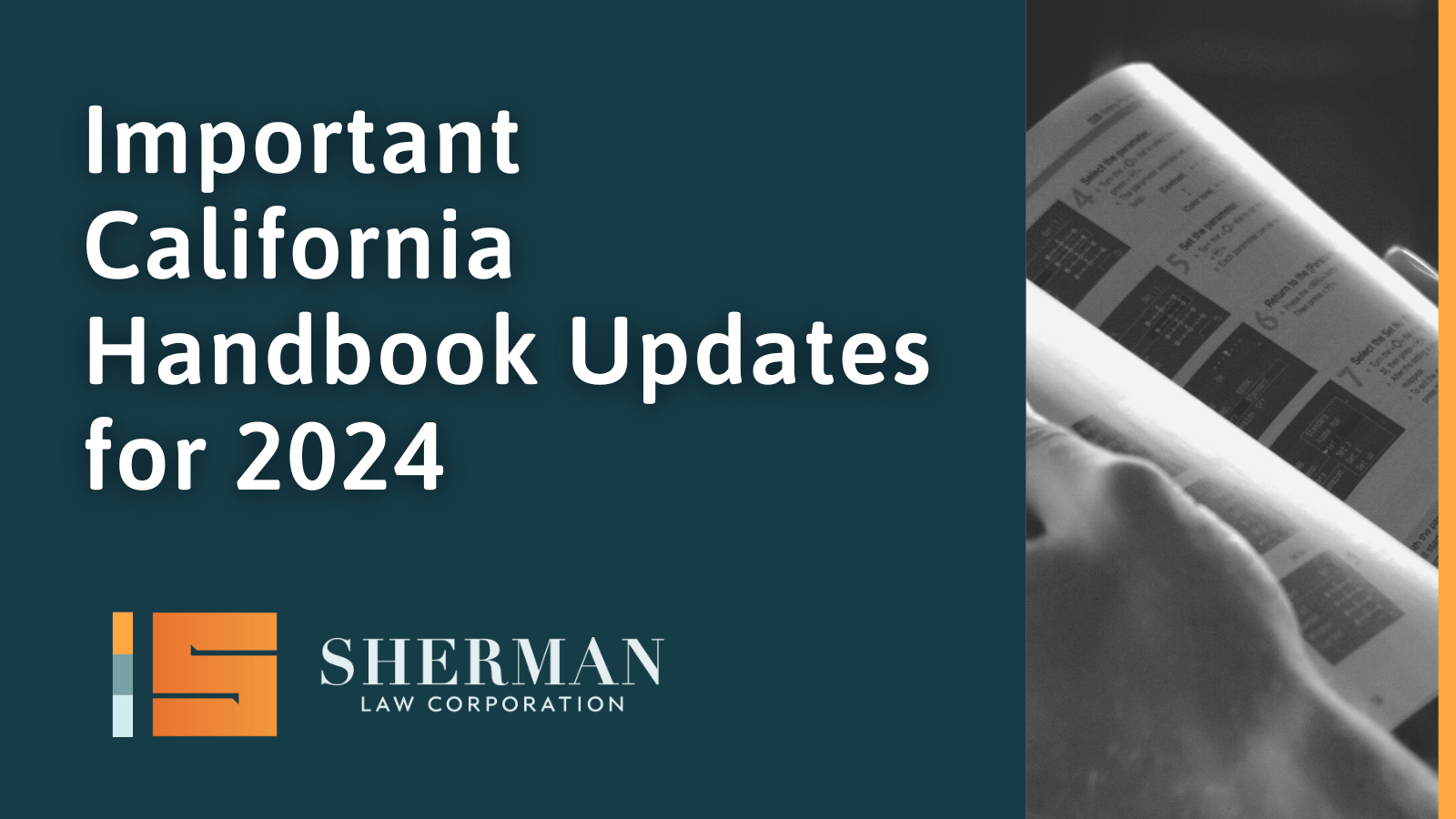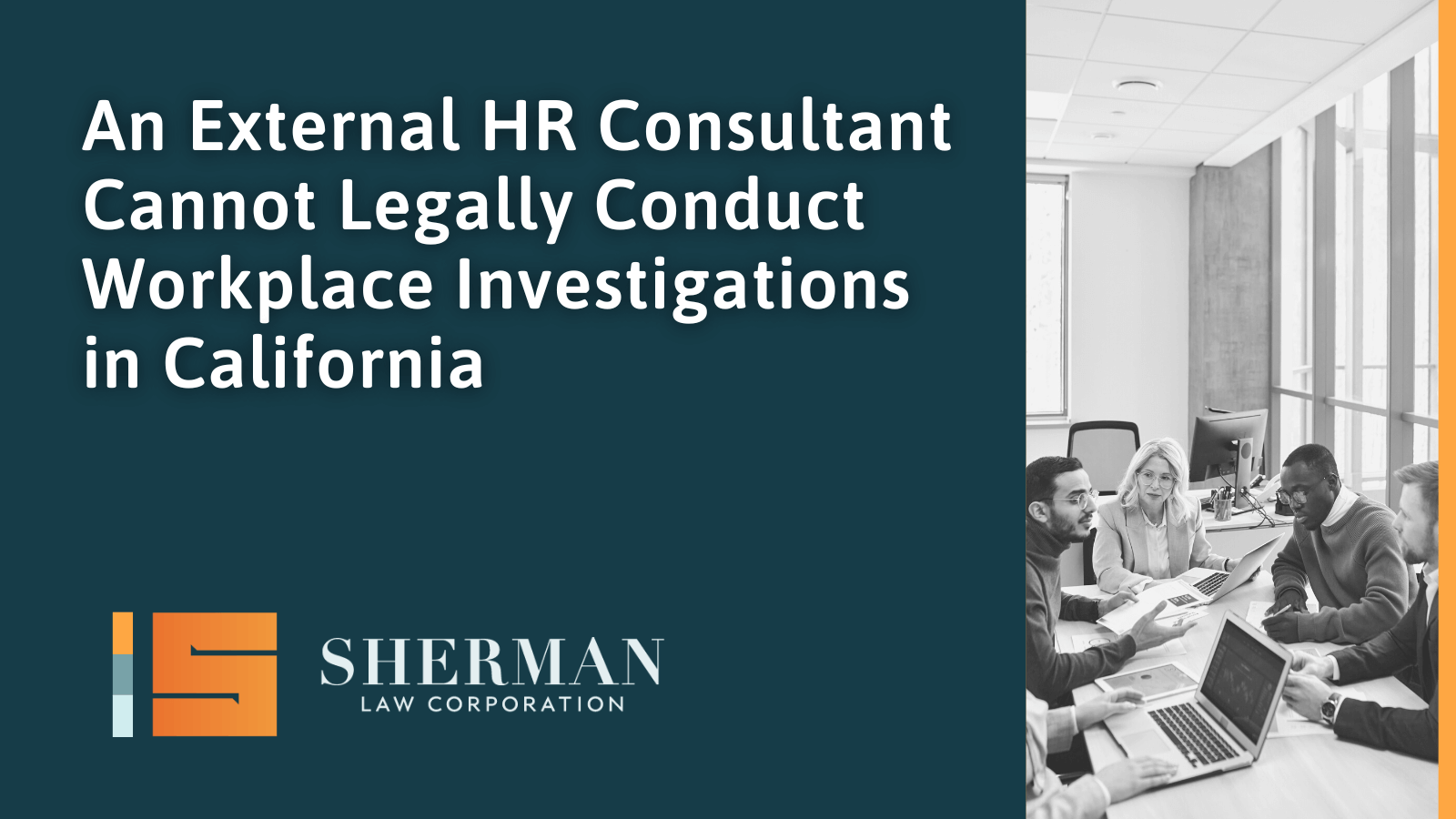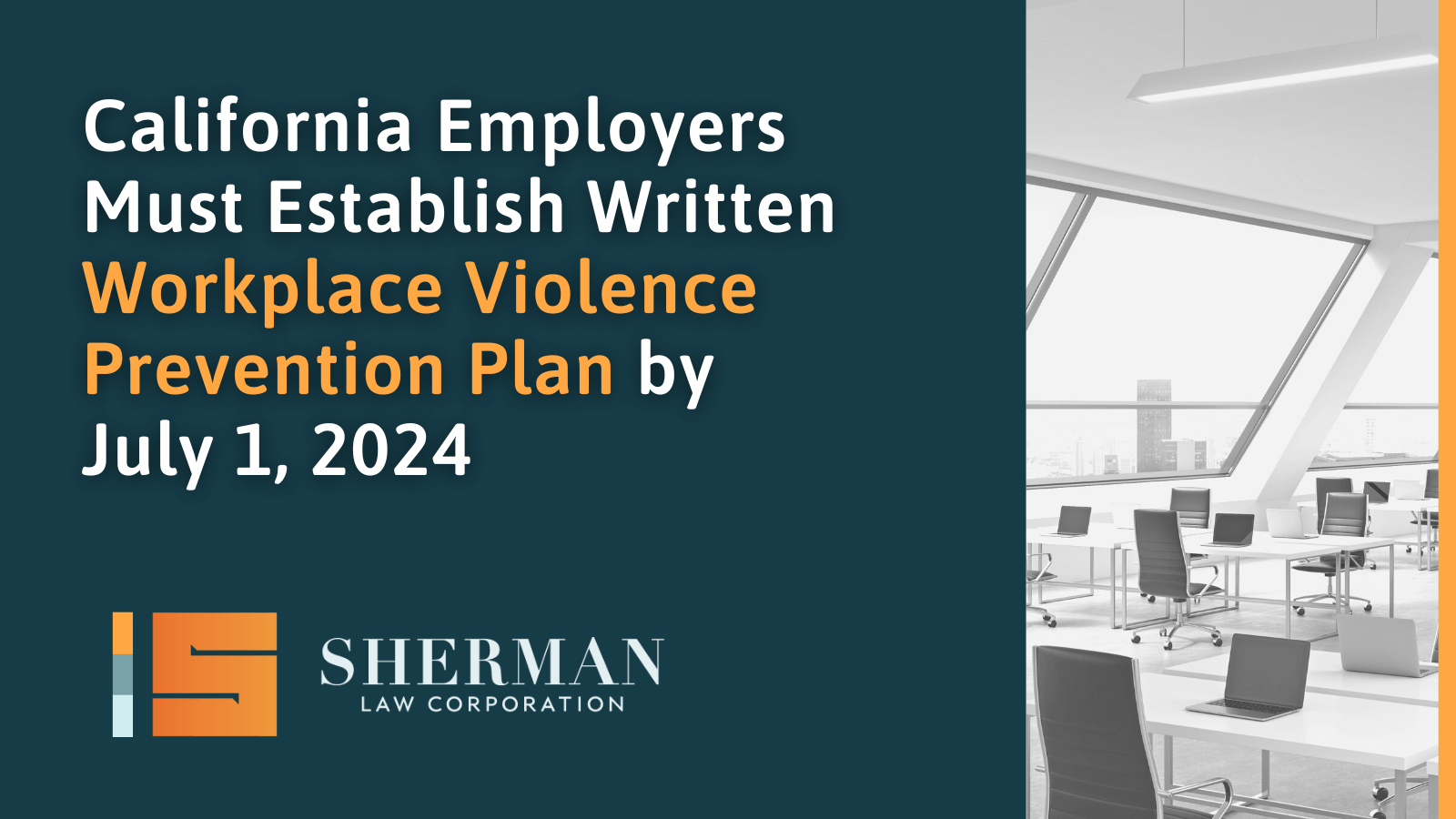
On February 9, 2022, California’s Governor Gavin Newsom signed Senate Bill 114, enacting a new set of legal requirements for paid sick leave related to COVID-19 in 2022.
There are some important changes to the existing legal framework that employers will need to know including how sick leave will be apportioned and new sick leave notifications on paydays.
The Sherman Law Corporation of Beverly Hills, CA has been an advocate for California businesses for more than 20 years. Leveraging comprehensive knowledge of state, local and federal employment law, the Sherman Law Corporation helps California businesses work through issues and get back to work.
Existing COVID-19 Regulations in California
In September of 2020, California enacted a law AB 1867 that required employers with 500 or more employees to grant COVID-19 paid sick leave. This law was later updated by SB 95 to include employers with 26 or more employees.
Under AB 1867, full-time employees were entitled to 80 hours of paid sick leave, and part time employees are granted total paid sick leave equivalent to the number of work hours over two weeks. Compensation must be at least that of the highest rate for the employee’s last pay period.
Employers must also provide notice of the amount of supplemental paid sick leave on the worker’s wage statement or a separate written notice issued on the pay date.
2022 COVID Supplemental Sick Pay Law
SB 95 expired on September 30 , 2021, leaving the state without a uniform paid sick leave policy.
With the passage of SB 114, the 2022 COVID Supplemental Sick Pay Law, the state now has a coherent policy that is retroactively applicable to January 1, 2022 and in effect until September 30, 2022.
The new law continues the policy of granting 80 hours of paid sick leave to full-time employees, but divided into two 40-hour allotments.
- The first allotment may be used for quarantine, vaccine appointments, recovery time following a vaccine, COVID-19 diagnosis or care of a child affected by a school or daycare closure.
- The second 40-hour allotment may be used for recovery from a COVID-19 infection or to care for an infected family member. It should be noted that the California Labor Commission has provided some clarification on the structure of this paid leave; employers are free to combine both 40-hour allotments into a 80-hour bank that the employee may use under the eligibility criteria of either category.
Another issue that required clarification from the Labor Commissioner was regarding the size of the companies that fell under the purview of the new paid sick leave law. Although SB 114 specified that all companies with 26 or more employees must comply, the law did not stipulate if all of the employees had to be within the state of California.
The Labor Commissioner made it clear that the new law applied to all companies with 26 or more employees, regardless of their location within or without the state.
Due to the new 40-hour classifications for supplemental paid sick leave, there was some confusion about notifying employees on their paystubs. The Labor Commissioner advised that only a single entry denoting the remaining hours from the 80-hour total was required.
Contact the Sherman Law Corporation for Help with COVID-19 Regulation Compliance
If you need protection from a spurious employment lawsuit, Sherman Law Corporation is here to help. With a long track record of successes for our clients, the Sherman Law Corporation has the experience and resources you need to defend your business. Contact us for a free consultation today.




